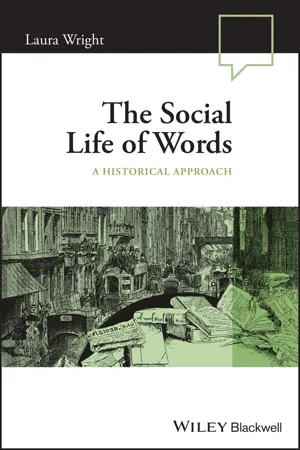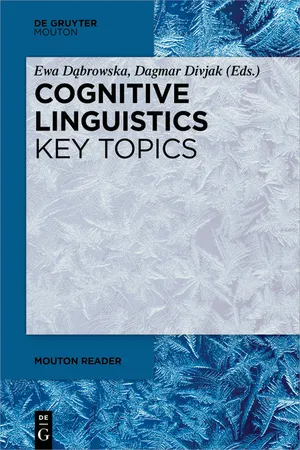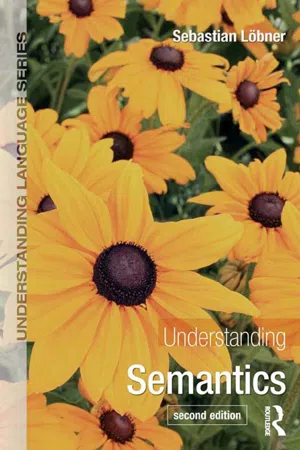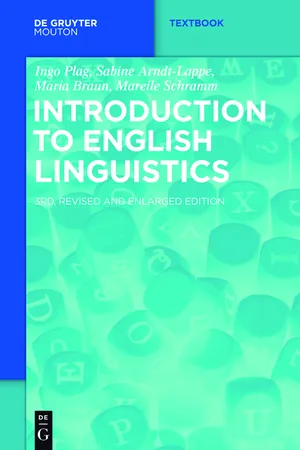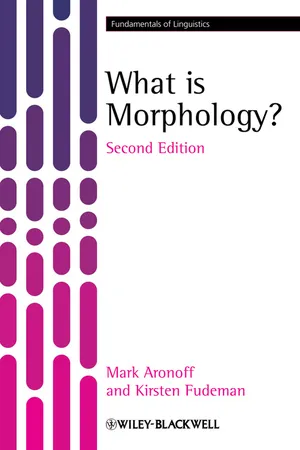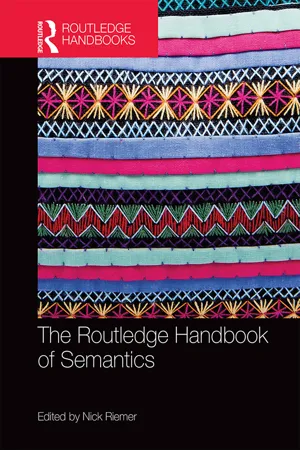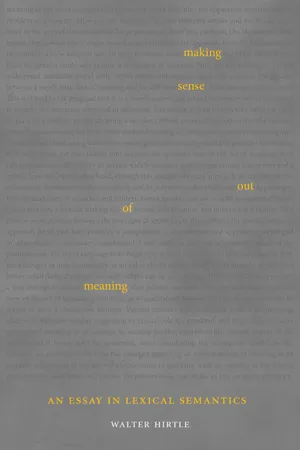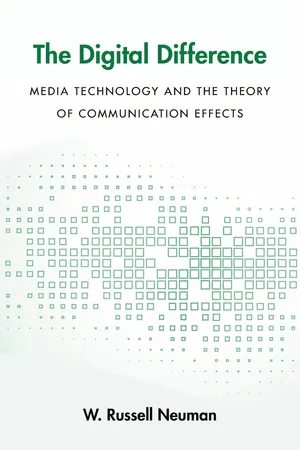Languages & Linguistics
Polysemy
Polysemy refers to the phenomenon in language where a single word has multiple related meanings. These meanings may be distinct but connected through a common underlying concept. Polysemy is a common feature in natural languages and contributes to the richness and flexibility of language use.
Written by Perlego with AI-assistance
Related key terms
10 Key excerpts on "Polysemy"
- eBook - ePub
The Social Life of Words
A Historical Approach
- Laura Wright, David Hornsby(Authors)
- 2022(Publication Date)
- Wiley-Blackwell(Publisher)
3The Sociolinguistics of PolysemyPolysemous words have developed more than one meaning at the same point in time (Ullmann 1962 ), and these separate meanings can be used by different social groups. However, Polysemy is not an uncontentious concept and semanticists continue to debate the difference between Polysemy and homonymy (Valera 2020 ) – homonyms being words which sound the same but which have unrelated meanings due to historical accident; that is, where sound‐changes have caused unrelated words to collapse together phonologically. From a sociolinguistic point of view, the distinction matters less than which groups of speakers use the different meanings.3.1. Introduction to the Sociolinguistics of Polysemy
Words reflect the changing situation of their speakers, and as words take on new referents, the old ones are not necessarily lost, so that a polysemous word can be used with both its new and old meaning, according to context. As new meanings develop, there will be a point in time when early adopters use it but others do not yet do so, so that ‘age’ may be the salient sociolinguistic variable, or the salient variable may be membership of the social group to which the new meaning pertains. Equally, as new meanings accrue, older ones may recede, so that older speakers, or speakers belonging to conservative social groups, retain them longest. For example, lawyers, a conservative community of practice, still retain the Anglo‐Norman term demise in its sense ‘to send away’ in the context of transferring property, but non‐lawyers use it to mean ‘death’, from the custom of transferring property upon the death of the owner.3.2. Previous Scholarship
Robinson (2010 ) researched the present‐day several meanings of the word awesome among 72 inhabitants aged 11–94 born locally to Sheffield, South Yorkshire, whom she classified according to age, education, occupation, gender, and place of residence. Her informants responded that they used awesome to mean ‘terrible’, ‘impressive’, or ‘great’, and also a combination of those meanings. She found that age was the most salient variable: awesome mostly meant ‘terrible’ when used by informants aged over 60, ‘impressive’ for those aged between 31 and 60, and ‘great’ for informants 11–30 years old. In terms of leading the change, she found that males were more likely to use awesome meaning ‘impressive’, and females were marginally more likely to use awesome meaning ‘great’ (Robinson 2010 : 93–98). In this study, the salient sociolinguistic variable was age: a person’s age determined which meaning of the word they were likely to invoke (Figure 3.1 - eBook - ePub
- Ewa Dąbrowska, Dagmar Divjak, Ewa Dąbrowska, Dagmar Divjak(Authors)
- 2019(Publication Date)
- De Gruyter Mouton(Publisher)
Stefan Th. GriesChapter 2: Polysemy
Stefan Th. Gries, Santa Barbara, United States of America1 The notion of Polysemy
The probably most widely accepted definition of Polysemy is as the form of ambiguity where 2+ related senses are associated with the same word; consider the meanings of glass in I emptied the glass (‘container’) and I drank a glass (‘contents of the container’). Ever since this notion was proposed by Bréal (1897), it has been puzzling researchers from many disciplines: linguists, lexicographers, psycholinguists, psychologists, computer scientists, etc. In the componential Classical Theory of Meaning (Katz and Fodor 1963; Katz 1967 ), (i) meanings1 of words were defined on the basis of necessary and sufficient conditions (or features/markers) without reference to contexts, (ii) therefore, a particular entity was either a full member of the category defined by a word or not, and (iii) the similarity of meanings of different words, or senses of the same word, could be quantified by counting the number of features/markers shared by meanings/senses. Thus, a word was ambiguous if it had more than one definition using such features (where no distinction between different kinds of ambiguity − homonymy and Polysemy − was made).Cognitive linguistics (CL), or cognitive semantics, drew on research in philosophy, anthropology, and cognitive psychology and adopted a perspective in which Polysemy became an omnipresent property associated with lexical items but also morphemes, grammatical constructions, and whole grammatical classes. Section 2 sketches the development of Polysemy in CL. Section 3 explores how Polysemy was addressed in neighboring fields (psycholinguistics and corpus linguistics), and section 4 points out desiderata for future CL research on Polysemy. - eBook - ePub
- Sebastian Loebner(Author)
- 2013(Publication Date)
- Routledge(Publisher)
The phenomenon of Polysemy results from a natural economic tendency of language. Rather than inventing new expressions for new objects, activities, experiences, etc. to be denoted, language communities usually opt for applying existing terms to new objects, terms hitherto used for similar or related things. Scientific terminology is one source contributing to Polysemy on a greater scale. Some scientific terms are newly coined, but most of them will be derived from ordinary language use. Among the terms introduced here, lexeme, homonymy, Polysemy are original scientific terms, while others, such as meaning, reference or extension, are ordinary expressions for which an additional technical meaning variant was introduced. There are, of course, lexemes which are not polysemous, e.g. the terms for the months or for the days of the week; these are called monosemous and the phenomenon, monosemy. As an example of Polysemy let us consider the noun light : it means a certain sort of visible radiation, but also electric lamps, traffic lights or illuminated areas (cf. light and shadow). Clearly, these meanings are interrelated. Likewise, the different meanings of light A2 which correspond to the opposites heavy and difficult are somehow interrelated although the relation is harder to defne. Note that heavy itself, and with it its opposite light, is again polysemous (cf. a heavy stone, heavy rain, a heavy meal). 3.2.3 The relationship between homonymy and Polysemy It is only from one particular perspective that homonymy and Polysemy present an alternative: namely, when we ask whether a particular form that is used with more than one meaning is to be assigned to one or to more lexemes. Apart from this question, Polysemy and homonymy are independent phenomena; two homonymous lexemes may well at the same time be themselves polysemous. For example, light A1 and light A2 are homonymous, and both homonyms are in themselves polysemous - eBook - ePub
- Ingo Plag, Sabine Arndt-Lappe, Maria Braun, Mareile Schramm(Authors)
- 2015(Publication Date)
- De Gruyter Mouton(Publisher)
5.1. :Fig. 5.1: Polysemy, homonymy and synonymyIn our discussion of synonymy we have then seen that this is a difficult concept. Many linguists assume that true synonymy does not exist; word pairs which we may consider to be candidates for synonymy turn out to be only near-synonyms upon closer inspection. Using some examples, we saw that near-synonyms indeed exhibit subtle meaning differences, and that meaning equivalences between lexemes usually do not include all meanings of polysemous lexemes. Finally, near-synonyms often differ in terms of the registers in which they may be used.5.5 Conclusion
In this chapter we have looked at the linguistic discipline which is concerned with the meaning of linguistic expressions: semantics. We saw that meaning is a relational property which describes the relation between the form of a linguistic expression and a mental concept. This relation needs to be distinguished from the relation which links linguistic expressions and mental concepts to the objects (or events or situations) that we talk about, which is described in linguistics in terms of reference and denotation.Concerning the question of which kinds of linguistic expressions can have meaning, we saw that meaning arises on different levels. Depending on whether the meaning of a linguistic expression involves the combination of the meanings of parts of that expression, we distinguish between compositional and non-compositional types of meaning. Non-compositional meaning can be found in morphologically simplex words and in morphemes. Compositional meaning can be found in morphologically complex words as well as in larger syntactic constituents such as phrases and sentences. The compositional meaning of a linguistic expression can be decomposed into the meanings of the parts of that expression. Interestingly, we saw that in such complex expressions the semantic scope of some elements (e.g. inflectional suffixes) may pertain to the whole expression. Furthermore, we saw that it is necessary to distinguish compositional semantic meaning from pragmatic meaning. - eBook - ePub
- Mark Aronoff, Kirsten Fudeman(Authors)
- 2011(Publication Date)
- Wiley-Blackwell(Publisher)
In this simple sign, there is a complex interaction between affixation and semantics going on, and that is the sort of thing that we explore in this chapter. We begin by introducing a fundamental problem in lexical semantics, the study of word meaning: the meanings of individual lexemes can be highly diverse. We then examine in some detail the semantics of derived lexemes to see what generalizations we can draw.5.1 The Polysemy ProblemThe most fundamental aspect of a word’s meaning is that it refers to some entity or relation (real or imaginary) in the world. We can refer to this entity or relation as the word’s semantic type. The word reptile refers to all individuals in the world that are reptiles. Verbs like respect or love refer to relationships between individuals. Formal approaches to grammar have provided us with terminology that allows us to make even more fine-tuned distinctions between words. We can differentiate bear from teddy bear by saying that the first is animate but the second is not, or foliage from leaf and literature from book on the basis of the mass/count distinction. Verbs are given labels such as ergative , unaccusative , transitive , or intransitive . (For a more detailed discussion, see Pustejovsky 1995: 8 ff.)The main problem of lexical semantics is that the meanings of individual lexemes are highly diverse. We call this the problem of Polysemy. As an example, take the verb lose. Lose has different meanings in the following sentences: They lost their passports ; Jake lost his job ; Sarah lost her husband to cancer ; I lost my temper ; We both lost ten pounds . But all of the meanings of lose reflected here are related – they are all instances of the same lexeme. Because lose has more than one related meaning, we say that it is polysemous.There are many types of Polysemy. In the next several examples, we present some general types of Polysemy, focusing on nouns. While some nouns are inherently mass or count nouns, others can be either, as with watermelon :(1) a. I love watermelon. (mass) b. I sold three watermelons. (count)A single form can have two or more related meanings, in which case we are dealing with Polysemy. Polysemy can be contrasted with homophony, where two or more words have different and unrelated meanings. Determine which of these relations is exemplified by the forms below. For answers, turn to p. 140. - eBook - ePub
- Nick Riemer, Nick Riemer(Authors)
- 2015(Publication Date)
- Routledge(Publisher)
This chapter introduces a major change that has taken place over the last quarter century in the way linguists think about the problem of Polysemy. Roughly speaking, semantic theory has moved from a static conception of Polysemy, in which senses are well-defined linguistic units (just like, say, phonemes or morphemes are discrete elements within the structure of a language) to a much more flexible and dynamic view of meaning. The chapter consists of three main parts. In the first part, we gradually zoom in on the central questions of Polysemy research. We then present an overview of the arguments that have led semanticists to abandon a static conception of Polysemy. In the third part, we have a look at the various ways, theoretical and methodological, in which semantic theory has incorporated the new view. The chapter concludes on a prospective note: it will be argued that the challenge posed by the new conception of meaning has not yet been adequately answered but rather defines a research programme for further investigations.1 Drawing distinctions
To get a grip on the issues involved in the study of Polysemy, we first need to introduce two sets of distinctions: that between Polysemy, vagueness, and ambiguity on the one hand, and that between utterance meaning and systemic meaning on the other.1.1 Polysemy, vagueness, ambiguity
The first distinction is important because in linguistic semantics (and specifically in lexical semantics, which will be our main focus throughout the chapter), the concept of Polysemy contrasts with the notion of vagueness. More specifically, the distinction between Polysemy and vagueness involves the question whether a particular semantic specification is part of the semantic structure of the item, or is the result of a contextual, pragmatic specification. For instance, neighbour is not considered to be polysemous between the readings “male dweller next door” and “female dweller next door”, in the sense that the utterance our neighbour is leaving for a vacation will not be recognized as requiring disambiguation in the way that she is a plain girl does. In the latter case, you may be inclined to ask whether plain is meant in the sense of “ugly” or “unsophisticated, simple”. In the former case, you may perhaps wonder whether the neighbour in question is a man or a woman, but you would not be inclined to ask something like: “In which sense do you mean neighbour – male neighbour or female neighbour?” The semantic information that is associated with the item neighbour in the lexicon does not, in other words, contain a specification regarding gender; neighbour is vague (or “unspecified”, as is sometimes said) as to the dimension of gender, and the gender differences between neighbours are differences in the real world, not semantic differences in the language. This notion of conceptual underspecification has to be kept distinct from three other forms of semantic indeterminacy. Since at least some of these alternative forms of indeterminacy may themselves be referred to as vagueness - eBook - ePub
Making Sense out of Meaning
An Essay in Lexical Semantics
- Walter Hirtle(Author)
- 2013(Publication Date)
- McGill-Queen's University Press(Publisher)
That is, every lexical sense a word expresses is an actualization of its lexeme in tongue. Assuming monosemy for the potential in tongue and Polysemy for the actualizations in discourse provides a basis for dealing with the problem of Polysemy. It also satisfies a necessary condition for communication because it permits a listener, on hearing a given word (i.e. its sign), to access its lexical potential in tongue and actualize the sense appropriate to context and situation. To my knowledge, other approaches to meaning have not explored the problem of Polysemy from this potential → actual point of view. Some linguists consider that the diverse senses expressed by a word need not be linked to a single underlying meaning but only to the same sign, and so view even homonyms as the same word. Another way of dealing with Polysemy is to treat it not as a characteristic of a word, but as a result of using that word, so that a word always expresses the same meaning but is interpreted differently because of variations in the context and situation. We will now examine a study adopting the latter approach. Few studies of particular verbs go beyond the dictionaries in examining different senses expressed in discourse. The most extensive and carefully documented one I am aware of is Ruhl 1989, which discusses four verbs, bear, hit, kick, and slap, in the light of numerous examples. Ruhl argues for their monosemy, attributing any apparent Polysemy to the “pragmatic” circumstances of a particular use. Although Ruhl’s theoretical approach is crucially different from the approach adopted here, his work is invaluable for the large collection of real examples arising from his basic assumption that the observation of meaning expressed in a sentence gives rise to data to be explained - eBook - ePub
Lexical Priming
A New Theory of Words and Language
- Michael Hoey(Author)
- 2012(Publication Date)
- Routledge(Publisher)
5 Lexical priming and Polysemy DOI: 10.4324/9780203327630-5Polysemy and definition
Sinclair (1987) , commenting on the development of the Collins COBUILD English Language Dictionary, notes that each meaning of a word can be associated with a specific collocation or pattern. Much subsequent lexicographical practice has indeed been informed by this observation.Sinclair’s observation is positively formulated. The point he is making is that a distinctive colligational or collocational pattern indicates a separate use of the word. As formulated, though, it would be possible in principle for two polysemous uses of a word each to have their own distinctive patterns for, say, 30 per cent of the time. Such a distribution would be clear-cut grounds for a lexicographer to make allowance for the Polysemy thereby demonstrated. It would also reflect itself in the characteristic priming of the language user, with each polysemous use being primed for the patterns in question with which it was associated. It would still, however, leave undescribed the 40 per cent of cases which fell into neither set of characteristic patterns. For these 40 per cent of cases, presumably ambiguity would be an ever-present possibility.Experience suggests (and Sinclair’s work elsewhere supports the view) that ambiguity in language in use (as opposed to decontextualised and fabricated examples) is a rarity. This suggests that Sinclair’s claim can be couched contrastively, such that the patterns of one use of a polysemous word always distinguish it from those of the other uses of the word. We are, I want to suggest, primed to recognise these contrastive patterns and to reproduce them. More precisely, I shall argue in this chapter that the collocations, semantic associations and colligations a word is primed for will systematically differentiate its polysemous senses and that ambiguity (or humour) will always result from our use of a word in ways not in accordance with these primings. If this position convinces, the meanings of a word will have to be interpreted as the outcome of its primings, not the object of the primings. - eBook - ePub
- Pedro J. Chamizo-Domínguez(Author)
- 2012(Publication Date)
- Routledge(Publisher)
almorranas is its vulgar equivalent and it is used in everyday language — although, surprisingly, they both share the same etymological origin (Corominas and Pascual 1984–87). This weak notion of synonymy is precisely what enables the writing of dictionaries of synonyms and antonyms of natural languages, despite the criticism received by such works (Casas Gómez 1999 and 2002). Contrariwise, a too demanding notion of synonymy will not enable even the conception of such works; and what is even worse, it would prevent any translation attempt.Nevertheless, these problems posed by synonymy in one language are multiplied when it comes to identifying synonyms in two given languages as a previous task to translation. And not only because—as Quine (1960) argued—the reference in itself is undetermined and no ostensive definition may provide the ultimate guarantee of the reference of two terms being the same, but also because in this case other issues come into play, such as homonymy, Polysemy, register and diachrony.2.3. HOMONYMY
I have previously pointed out that chance false friends are the equivalent in two given languages to homonymous terms within a single language. However, as many authors do not properly specify the limits of homonymy and the notion of Polysemy, I will insist on the similarities and differences between them, insomuch as both notions are essential for the treatment and classification of false friends. From a synchronic point of view, Polysemy might well be reduced to homonymy, if we also accept that speakers are not aware at all of the diachronic evolution of their own language. Nevertheless, if we introduce the diachronic consideration and we add the fact that speakers are usually aware that semantic changes have taken place in most words of their own language, then we cannot help delimiting as much as possible the homonymy and Polysemy spheres. This will lead to establish within a language what signifiers have different meanings as the result of either a mere diachronic accident or a transference the speakers were aware of at some moment in the past, though most of them are not aware of at present. Even although there may be borderline cases in which speakers take for a Polysemy what is in fact a homonymy, and vice versa, that they consider as homonymous terms that linguists classify as polysemous (García Yebra 1983: 79–90). And, if we consider two different languages, why some meanings have become false friends as a result of a mere phonetic accident and why others have become false friends because they have undergone certain semantic changes. - eBook - ePub
The Digital Difference
Media Technology and the Theory of Communication Effects
- W. Russell Neuman(Author)
- 2016(Publication Date)
- Harvard University Press(Publisher)
There are some more straightforward and less daunting techniques of empirical inquiry that have attracted some limited attention in the study of communication. Again, the effort is to engage some form of quantitatively accessible natural language on the part of the respondent rather than assess differences in predefined self-report survey items querying behavior or attitudes. The broadest term for these techniques is protocol analysis popularized by Anders Ericsson and Herbert A. Simon in studies published in 1984 and 1993. They review the variety of techniques and interpreting natural language and semistructured interviews primarily in the domain of psychology (see also Mishler 1986). Related methodologies include the think-aloud technique (Eveland and Dunwoody 2000) and thought-listing protocols (Cacioppo and Petty 1981; Iyengar 1987; Cacioppo, von Hipple, and Ernst 1997; Price, Tewksbury, and Powers 1997; Valkenburg, Semetko, and De Vreese 1999). But attention to such approaches is sporadic.We conclude this review by returning to the central argument. The phenomenon of Polysemy has not escaped the attention of the media effects tradition, but because it is so frustratingly difficult to address empirically, it has been addressed only fleetingly, incompletely, and largely discursively. The strong commonalities and convergent findings among pioneering studies are only vaguely acknowledged. And perhaps most important, this direction of research has not yet been incorporated into the paradigmatic models that dominate the effects tradition.What If Cultural Studies Took Polysemy Seriously?
At first glance, although it mimics the preceding section heading, the heading for this section of the chapter may strike some readers as puzzling. The media effects tradition rather famously sidesteps the messiness of polysemic communication and would benefit from confronting it more seriously, but the cultural studies tradition, if anything, would appear to be obsessive about debating the alternative meanings of text. Cultural studies students, it is understood, are prone to argue late into the night over what a text really means and (my personal favorite) whether the meaning of a text resides in the text or in the reader (or perhaps in the author’s intent). Is the argument here that cultural studies has not taken Polysemy seriously? Indeed, my argument is precisely that.The proposition in a nutshell is as follows. Polysemy implies attention to the enduring importance of multiple meanings of a text as they evolve among multiple audience members and audience groups. To assert that a text really means this or should mean that is to propose monosemy. For cultural studies to take Polysemy seriously it would need to address the structure of variation in meaning. In my view, that is what the call to arms of Stuart Hall’s celebrated essay “Encoding/Decoding” (1980) necessitates. Hall identifies four ideal-typical modes of culturally situated meanings of popular narratives: (1) a preferred or dominant code reflecting the interests of the extant elite; (2) a professional code of the intermediary journalists, publishers, and broadcasters; (3) a negotiated code of some audience members, what Hall describes as “a mixture of adaptive and oppositional elements”; and (4) a fully integrated oppositional
Index pages curate the most relevant extracts from our library of academic textbooks. They’ve been created using an in-house natural language model (NLM), each adding context and meaning to key research topics.
